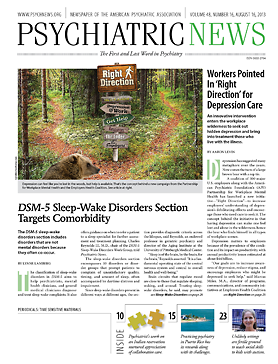The neighborhood environment in which people with severe mental illness live may be a factor in whether they are able to integrate into the community successfully.
But a study analyzing neighborhood geography in Philadelphia published in the August Psychiatric Services showed that neighborhoods with a large concentration of adults with serious mental illness had higher levels of physical and structural inadequacy, drug-related activity, and crime than comparison neighborhoods.
Likewise, higher levels of physical and structural inadequacy, crime, drug-related activity, social instability, and social isolation were associated with a higher concentration of people with serious mental illness in the neighborhood’s adult population.
Among the factors assessed, the biggest disparity was in the physical and structural characteristics of neighborhoods, with those where seriously mentally ill people lived having a larger number of vacant buildings and properties, gas-service shutoffs, and demolished buildings.
“These findings establish the importance of further exploration of the degree to which environmental factors may act as either barriers or facilitators to the functioning and participation of persons with serious mental illness,” said principal author Mark Salzer, Ph.D., of the Department of Rehabilitation Sciences at Temple University and colleagues in their study report. “This is especially true of physical characteristics, for which the largest effects were observed. Studying these factors...could do much to help identify new areas of intervention intended to promote the functioning and integration of persons with serious mental illness.”
Data for people who used mental health services for treatment of a serious mental illness were obtained under a business-associate agreement with Community Behavioral Health (CBH), a publicly run managed care organization that manages behavioral health services for Medicaid recipients in Philadelphia. The dataset consisted of 15,246 individuals aged 18 to 64 who were eligible for Medicaid throughout 2000 and who had a claim for at least one inpatient or two outpatient Medicaid-reimbursed services from 1997 to 2000 that were related to diagnoses of an affective disorder or schizophrenia.
The addresses of individuals with serious mental illness in the CBH dataset were matched to the U.S. census block group in which their residence was located. Then a comparison group of 15,246 randomly generated address points representative of the general Philadelphia population was created and matched with the corresponding census block group.
A wide range of variables and characteristics for each census block group was assessed. A set of 22 variables measuring several broad areas—crime, physical and structural inadequacy, economic and housing market values (home values, rent levels, median income, and lien sales for delinquent property taxes), and social isolation (proportion of industrial properties, commercial properties, one-person households, households recently moved within one year, and renter-occupied properties indicating less opportunity for social interaction)—was selected from these data sources to compare across the different census block groups.
The analysis showed that individuals with serious mental illness lived in neighborhoods with more serious crime, higher amounts of delinquent crime, and far more drug-related activity than the neighborhoods of the comparison group. But the biggest disparity distinguishing the neighborhoods where people with severe mental illness lived was in the areas’ physical and structural characteristics.
Neighborhoods where those with mental illness tended to live were also likely to have higher social instability and a higher probability for social isolation, but the difference was not statistically significant.
Salzer and colleagues said their findings are important because they provide a foundation for future research on neighborhood and environment and functioning of people with severe mental illness. “[T]he still nascent body of research in this area has yet to ascertain the extent to which a worse physical or crime environment may serve as an impediment to community integration of persons with serious mental illness,” they noted. “Thus, although it is not possible to draw direct implications from the current study about the impact of neighborhood factors on community integration, the findings…provide a broader foundation for future research to identify barriers and facilitators to community participation of persons with serious mental illness. The need for research on the relationship between neighborhood characteristics and community integration is especially important, given that housing interventions for persons with serious mental illness continue their shift away from congregate housing and toward scattered-site independent housing units in the community….Additional research in this area could help refine housing approaches to promote better community integration of persons with serious mental illness.” ■

